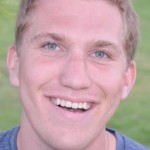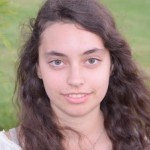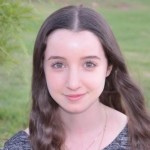Participants on NCSY’s TJJ Ambassadors Poland trip spend a week in Poland touring and reflecting on Jewish history and the role of tragedy in the creation of Jewish identity. Then they come to Israel for four weeks. This year much of that time was marked by a war that is very different from the remnants of the war they saw in Poland.
“Most of the kids on this trip attend public schools,” says the group’s director, Marc Fein. “They are mostly in 10th-12th grade and come from all over the US and Canada.”
He explains that one of the goals of this trip is to present the “entirety of the history of the Jews. From tragedy to triumph.
From terrible sadness to jubilation.” Even in Poland they don’t just dwell on those who died, Fein says. “We also show them how to celebrate the life that was. Going to Poland first changes the way they experience Israel because they really understand the importance of the Jewish homeland.”This summer, the war in Gaza added another dimension to their experience. “After being in Poland it was really important that they meet people who live in Sderot,” Fein says. As with everyone else in Israel this summer, they experienced the reality of war and the importance of the IDF.
Where they Went
The itinerary for the week in Poland reads like a Jewish history book. Among the places they visited: Gur, Lublin, Majdanek, Belzec, Lizhensk, Auschwitz-Birkenau, Krakow, Kazimierz, Lodz and Chelmno. Not all of these places are concentration camps. Some had thriving Jewish communities or Hassidic dynasties.
What prompts North American Jewish teenagers – especially those who have been to Israel at least once – to want to visit Eastern Europe?
“I wanted to see the culture of the Jews of Europe,” says Salome Henry, 16, from Brookline Massachusetts and a student at Brookline High School. “I wanted to see what was lost.”
“We have survivors in our family so I wanted to get some insight into what they went through,” says Daniel Pressman, 19, from Phoenix, Arizona. He is headed to the University of Arizona in the fall. “This trip changed who I am. I’m older now,” he says.
“I grew up hearing about the Holocaust so this trip made everything more real,” says Rebecca Windheim, 16, from Montreal, Quebec. She attends a private school in Montreal. “What was especially important is that we didn’t just go to concentration camps,” she says, although they visited several. “We also went to shtetls, cemeteries, mass graves and synagogues.
This trip was much more than a Holocaust trip,” she says. “It also stressed the Jewish culture that was destroyed.”“We davened and danced in different shuls,” Henry says. “We also had a chance to read from a Torah scroll that had been burned.”
Thirsty for Jewish Energy
“The shuls we visited were thirsty for the Jewish energy we brought,” Windheim says.
“When we were in the museum in Auschwitz 2 people were filming us because we were waving Israeli flags and singing ‘Am Yisrael Chai,’” Henry says. “We realized we’re what remains.”
When Jews visit Poland, concentration camps obviously make an indelible impression. Pressman has at least two very vivid memories. “We went into the remains of the gas chamber in Majdanek. So many people clawed at the walls trying to get out that the wall turned blue,” he says. They also climbed a long flight of stairs to a huge platform. When they got to the top, “we realized that we were looking at a mountain of ashes,” he says. “I remember thinking that these used to be people.”
“They told us it took 18 minutes for people to die in the crematorium at Majdanek,” he says. “Of course we thought that 18 stands for Chai (life) and it’s also the amount of time allowed to bake matza.”
Hostile Vibes in Krakow
Modern day Poland was a bit more negative than the group expected. “We felt really hostile vibes in Krakow,” Windheim says. “The people were not at all welcoming to us.”
“Wherever we went, it seemed like people were constantly filming us because we’re so obviously proud to be Jewish,” she says. “Nevertheless we felt that Jews are not welcome in Poland.”
Coming to the War
And then they came to Israel.
Windheim and Pressman said that their parents were freaking out about their being in Israel during the war. “I told my parents that I feel safer here than anywhere else,” Henry says.
“The NCSYers got to experience the reality of the war in Israel and the importance of the IDF,” Fein says. “After Poland it was really important for them to meet people who live in towns that are being shelled.” They ran a summer camp one day for children from Sderot.
“We’re making sure to keep them safe but we’re not shielding them from the reality of what’s happening in Israel this summer,” Fein says.“What we all realized is that the reactions people had to us in Poland and in Israel couldn’t be more different,” Windheim says.
“Everywhere we go in Israel people tell us how grateful they are that we came to show solidarity in their time of need. We didn’t really need to be reminded that in Israel it’s really true that everyone is one big family,” she says.



